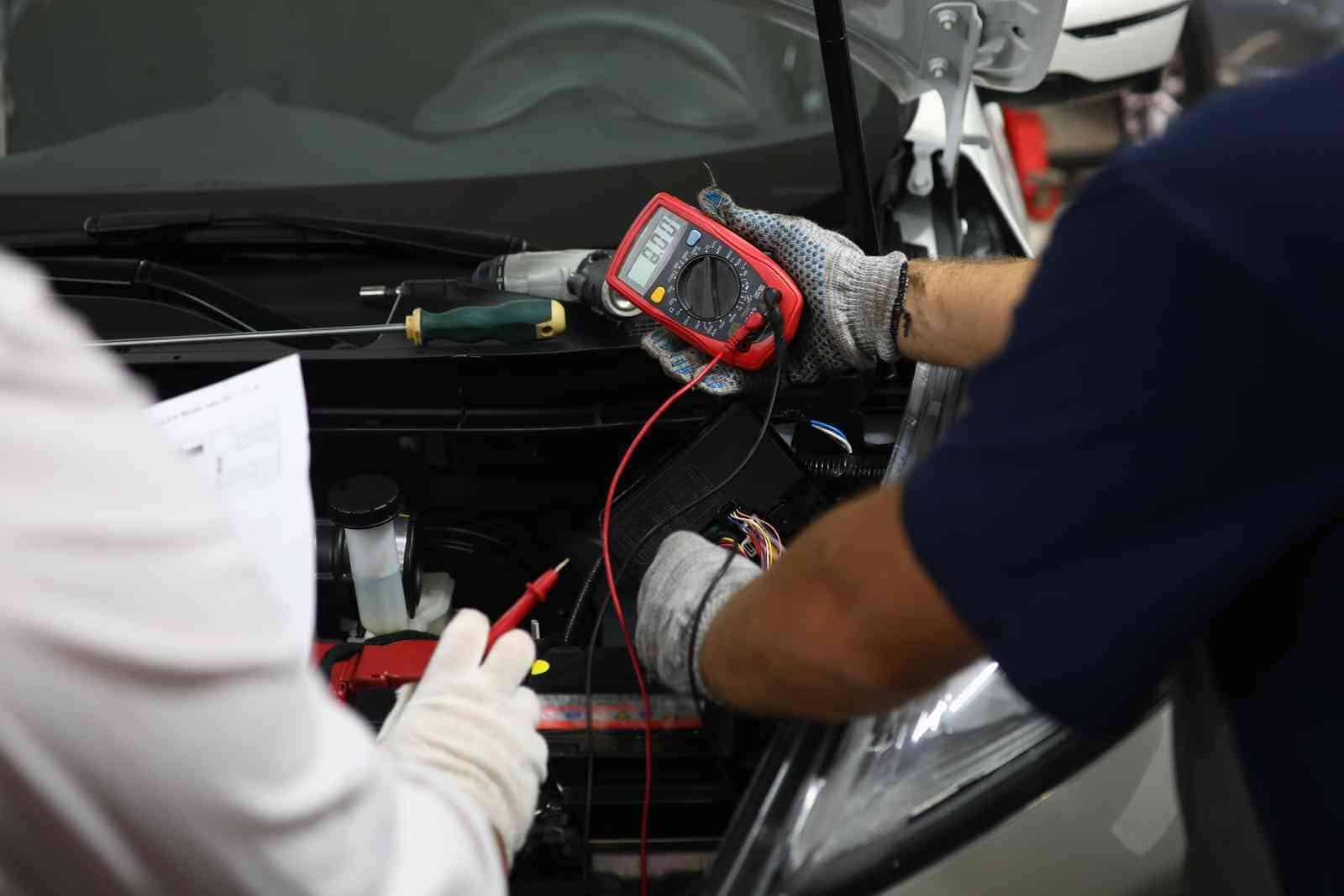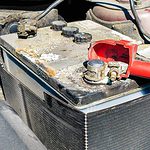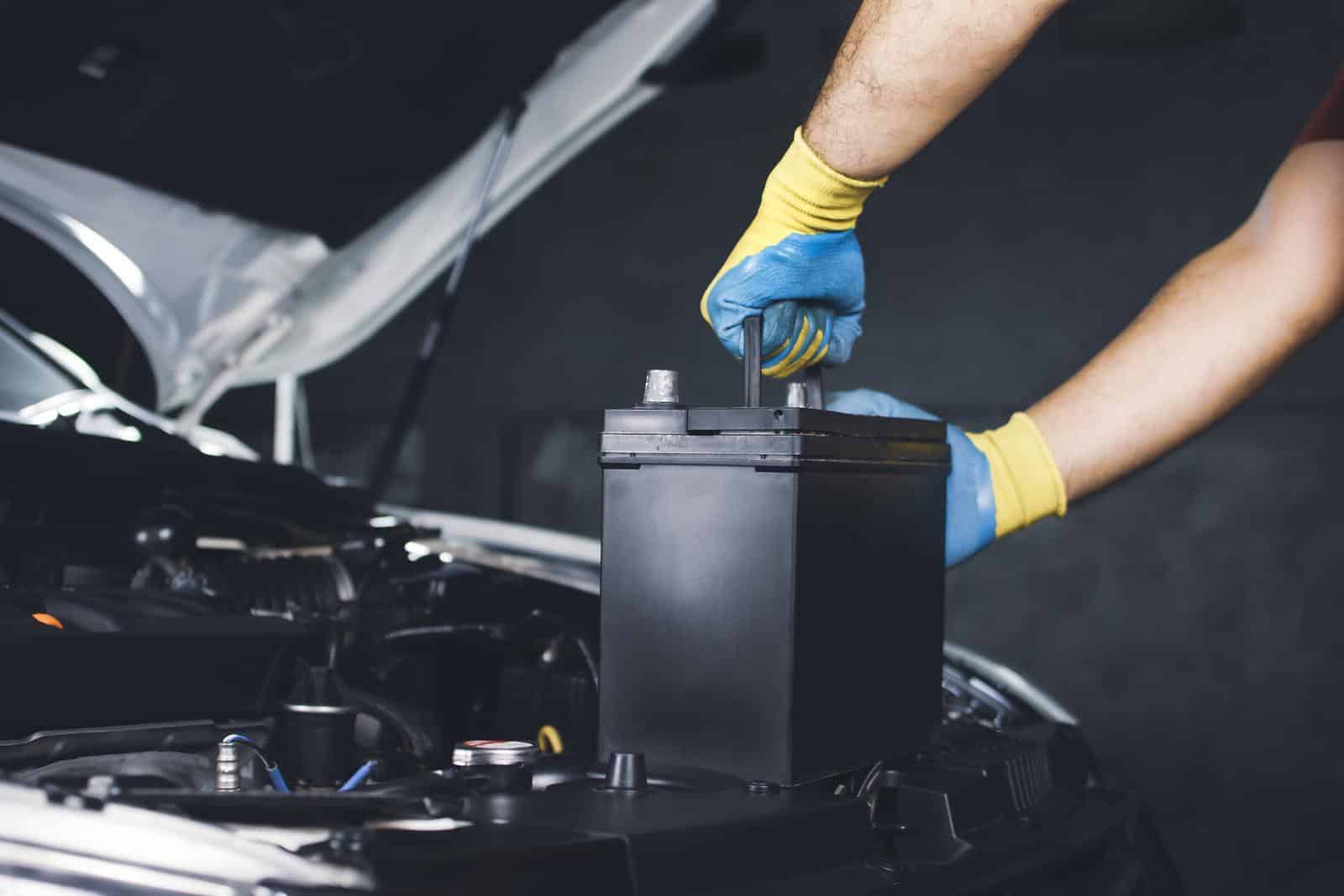Five 5 Tell-Tale Signs that Your Car Battery Is Dying
Introduction
Despite titles like “11 Signs of A Dying Battery”, there are actually only five major signs that your car battery is wearing out and needs to be replaced. Discover the major signs of a dying car battery and learn how to prevent costly breakdowns. From slow engine starts to dimming lights, find out what to look for and take action now. Read more!
Let’s explore causes of battery issues.
What Causes a Car’s Battery to Die Prematurely?
As a car owner, it’s important to understand the factors that can cause your car battery to die prematurely. We will explore the different causes of battery failure and how you can prevent them from happening.
Driving habits, Infrequent Use or Short Trips are one of the principal causes of premature battery failure. Naturally, batteries lose charge when they are not used. This is known as self discharge. Even when the car is parked, the battery still powers the clock, computer and accessories.. If you don’t use your car often or only make short trips, the battery never replaces that lost power and its lifespan will be reduced.
Accidental Discharge. This can happen if you forget to turn off your headlights or inside (dome) lights, or use your heated seats while the engine is not running. Afterwards, if the battery is old, it may not be possible to recharge it back to full capacity. However, recharging the battery may not prevent a shortened lifespan..
Extreme Temperatures are a common cause of early battery death. Extreme heat or cold weather can affect the chemical reactions taking place inside your car battery and reduce its overall lifespan. This is particularly true for older batteries that are already weak and susceptible to damage. A study conducted by Consumer Reports found that extreme heat can reduce battery life by up to 50%.
Overcharging or undercharging. A faulty alternator may overcharge your battery, leading to damage and reduced lifespan. Similarly, if a bad alternator or loose connections in your electrical system can cause your battery to gradually discharge. These issues cause internal damage to the battery and can also lead to premature battery failure.
Excessive Electrical Load is an often overlooked factor that causes premature battery failure. This refers to using too many electronic devices while idling in traffic or parked with the engine off. Electric seats, power windows, seat heaters, cell phone chargers etc. all these electronics draw power from the same source as starting up. This can put extra pressure an already weakened system, causing it to fail more quickly than expected.
For more information on the above, read our article on 8 Things That Can Kill Your Car Battery.
Now that we’ve discussed some of the most common causes of premature battery death, let’s focus on how you can avoid them:
Have a mechanic inspect the electrical system and battery regularly. This includes checks on the charging voltage range (12-14 volts), testing alternator output (13-15 volts), and checking for loose connections or damaged cables between various components of the electrical system.
Second, it’s essential to maintain your battery’s charge level by using a trickle charger or driving regularly. Avoid letting your battery sit for extended periods without use, particularly during extreme temperatures.
Last, if you notice any signs that your battery is failing, such as a sluggish engine start or dimming lights, have it checked out immediately. Replacing an old or damaged battery will save you time and money in the long run.
How do I test my car battery?
Testing your car battery is essential to catch issues early on before they become major problems. Regular testing can save time, money, and frustration in the long run. In this chapter, we will discuss how to test your car battery using a voltmeter or built-in diagnostic systems.

Tools you will need for testing: a digital voltmeter or multimeter, protective gloves and goggles, and a wire brush for cleaning terminals. Multimeters are more versatile as they can measure other electrical components, like fuses or relays, but are more expensive than basic voltmeters.
Before testing your car battery, ensure that the engine is off and all electrical components are turned off. Then locate the battery under the hood of your vehicle; it should be rectangular-shaped with two terminals connected by cables. The positive terminal (+) is usually red and marked with a plus sign, while the negative (-) terminal is black and marked with a minus sign.
To use a voltmeter for testing:
1) Set the voltmeter to DC volts mode.2) Connect the red lead to the positive terminal of the battery.3) Connect the black lead to the negative terminal of the battery.4) Check voltage reading on display; it should be around 12.6-13 volts when fully charged.5) If voltage reading is below 12 volts when not running it could indicate that your car’s battery needs replacement.
Some modern cars have built-in diagnostic systems that allow you to check your battery’s health without external tools like voltmeters. These systems usually display information on your dashboard or infotainment system that shows how much charge remains in your vehicle’s batteries.
If you suspect an issue with your car’s electrical system but aren’t sure whether it’s related to its charging system or not, it’s useful to perform a load test. A load test involves introducing a high electrical load to the battery for 15-30 seconds and then checking the voltage reading.
To perform a load test:
1) Turn off all electrical components.2) Connect the voltmeter as described above.3) Turn on headlights, radio, air conditioning, and other electrical systems that draw power.4) Observe voltage reading; it should not drop below 9.6 volts; otherwise, it could indicate that your battery is weak.
Stop the test after a maximum of thirty (30) seconds to avoid discharging your battery.
Last Signs that Your Car Battery Is Dying: Battery Warning Light Is Illuminated on The Dashboard

The battery light, check engine lights and other dashboard lights should never be ignored, especially if they are RED. Interestingly, a battery warning light is not usually caused by a bad battery.
In fact, the common reason for the battery light to turn on is a problem with the battery’s charging system, i.e., the alternator or alternator belt. An alternator issue can cause the battery to discharge overtime. This can run the battery down in a matter of hours or days depending on the number of electrical components being used in your vehicle.
Ignoring this warning can lead to the battery dying completely and leaving you stranded. If you notice the battery warning light illuminating on your dashboard, bring your vehicle to a professional automotive technician. They will inspect your battery, alternator, and charging system to determine the issue. They may recommend replacement battery or other necessary repairs to prevent further damage to your vehicle’s electrical system.
The Engine Is Slow to Start up Or Wouldn’t Start at All
The engine being slow to start up is one of the most common symptoms of a dying car battery. This telltale sign is usually just a clicking sound or a grinding sound. This can be the only sign you will get before you are stranded with a dead battery. But why does it happen? When you turn the key in your ignition, a small motor called a starter engages with your engine’s flywheel. This turns the engine over until it catches and starts running on its own.
To do this, the starter requires a large amount of electrical power from your car’s battery. Vehicle batteries must be in a good condition to provide this initially power boost. If your battery is weak or has been drained by other electrical components like headlights or radios left on overnight, it won’t have enough juice to provide that initial boost.
Another culprit for sluggish starting performance could be an alternator that isn’t charging correctly. Your car’s alternator recharges its battery while you’re driving by converting energy from the engine into electricity.
However, if there’s something wrong with your alternator- for example, if it has worn brushes or faulty diodes- then your battery won’t receive enough charge while you’re driving to keep it properly topped up.
So how can you tell if a weak battery, a bad starter or an alternator problem is causing slow starting?
One easy way to test this symptom yourself with minimal equipment required is by checking voltage levels using a voltmeter.
Connect the voltmeter across your vehicle’s terminals- positive (+) red lead on positive terminal and negative (-) black lead on negative terminal- and look at what reading shows up.
A fully charged 12-volt automotive battery should read around 12.6 volts when not in use (engine off). If that voltage drops below 11 volts under load (when trying to start the engine), it’s a strong indication that the battery is weak or dying.
If the voltmeter shows a healthy battery voltage while starting, but still struggles to turn the engine over, then it’s likely that there’s an alternator issue at play. In this case, you’ll need to have your alternator tested by a professional mechanic.
For a more detailed look at battery voltage issues read our post on: Why Your Car Battery Voltage is Low and What to do About it.
If the car starts quickly in the morning but struggles to start after the engine is warmed up then the issue is most likely a bad starter.
Dim Lights
One of the earliest warning signs that your car battery is dying is dimming headlights or interior lights. While it may seem like a minor inconvenience, dimming lights can be a symptom of a larger issue that needs to be addressed promptly.
Dimming lights are caused by a lack of power in the battery. When your car’s electrical system demands more power than the battery can provide, the lights will start to dim.
If you notice that your car’s headlights or interior lights are starting to dim, it’s important to take action quickly. This could mean testing your battery with a voltmeter or taking your car into a mechanic for further inspection.
Ignoring this warning sign could lead to more severe issues down the line. If the battery continues to weaken, other electrical components in your car may start malfunctioning as well. This could cause costly repairs and leave you stranded on the side of the road.
Electrical Components Not Functioning
As we’ve mentioned earlier, one sign that your car’s battery is weak is when electronic parts start to fail. Headlights, windshield wipers, radios, and electric windows – these are just a few examples of the electrical components that can be affected when your battery starts to weaken.
When these parts malfunction, it’s crucial to check your cables and terminals first before deciding whether it’s time for a replacement. Loose cables or corroded terminals can cause electrical issues that mimic those of a failing battery. Make sure that the connections are tight and free from corrosion.
If you’ve checked your connections and still experience issues with your electrical components, then it could be time to replace your battery. It’s essential to note, however, that other factors could cause electronic malfunctions like blown fuses, faulty relays or switches, among others. It would be best if you eliminated these possibilities before concluding that it’s time for a new battery.
To help you diagnose the problem with more precision and accuracy, consult the owner’s manual or seek professional advice from a mechanic. They have specialized tools and equipment to determine what is causing the issue correctly.
Smelly, Swelling, Bloating or Leaking Battery
These are the most accurate signs that you have a dying battery. If you notice your car battery swelling, bloating or leaking, it’s a clear sign that it’s time for an immediate replacement. A bloated battery sometime emits a strong rotten egg smell. This is what sulphur from battery acid smells like. Battery fluid is also known as sulfuric acid (US) or sulphuric acid (UK). These warning signs indicate that your battery is overheating from too much pressure from acid and gas inside or from the buildup of corrosion (sulphation) inside the battery cells. Either way, this situation is dangerous and can cause serious damage to your vehicle.
The heat generated by the excess pressure causes the casing to expand outward. This can be seen as a bulge on the sides of the battery case. If this happens, don’t attempt to jump-start your car as it could lead to an explosion.
Bloating batteries are usually caused by the old age of the battery, over-charging by the alternator or by high temperatures in the engine compartment. Swelling shows that there may be internal damage to your car battery.
Leaking batteries are another sign that a replacement is necessary immediately. When corrosion occurs because of acid buildup inside of a failing battery, it can eat through cables and connectors, which can cause electrical shorts and other problems with electronic components such as lights or window motors.
If you suspect any of these issues with your car’s battery, contact a qualified mechanic who can provide professional advice on what steps need to be taken next.
It’s important not only for safety reasons but also because delaying replacing a damaged car battery will lead to further damage in other parts of your vehicle like alternator failure, fire and finally engine breakdowns.
Conclusion
Knowing when it’s time for a new car battery replacement is crucial for avoiding expensive repairs down the road. Keep an eye out for warning signs like swelling or bloating batteries and leaks as they signify deeper issues than just low power output resulting from old age alone. Be proactive in taking care of your vehicle’s battery to ensure that it is always running at its best.
Author Bio: Victor Jaxen is a highly experienced Sales and Marketing Manager in the automotive industry. With over twenty years of experience, he has demonstrated expertise in customer service, automotive engineering, and car batteries and electrical systems. Holding a Master of Engineering – MEng degree in Manufacturing Engineering from Cardiff University / Prifysgol Caerdydd, Victor is passionate about delivering exceptional results and utilizing his skills to drive business growth. With his comprehensive knowledge and understanding of the automotive industry, Victor provides accurate and reliable information on a wide range of topics, including car batteries and electrical systems. Stay tuned to annewetey.com for valuable insights and industry expertise from Victor Jaxen!


 Previous Post
Previous Post Next Post
Next Post
